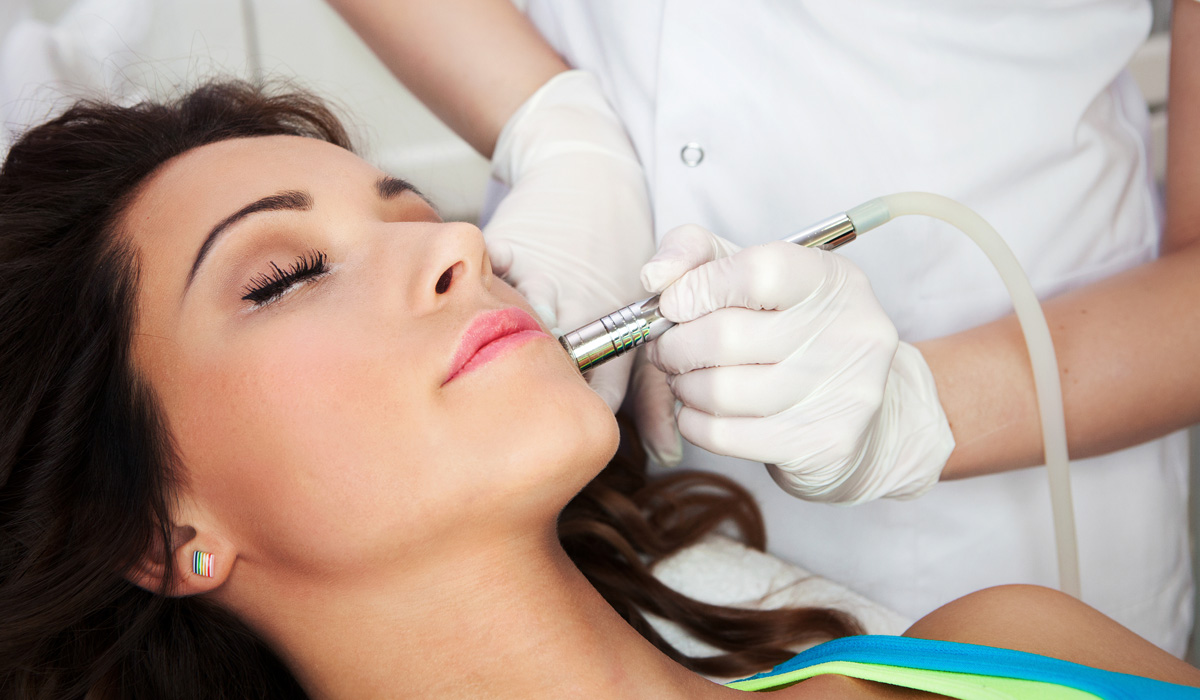Acne. Just hearing the word may send a chill up your spine. For some, the common skin condition, which affects more than 50 million Americans, will clear up on its own, or by changing your soap. For others, acne is the bane of their existence, leading to a series of dermatologist or plastic surgeon visits and trials of different creams and products.
Severe acne can cause scarring either immediately after disappearing, or later in life. According to the American Academy of Dermatology, “As we age, acne scars often become more noticeable because our skin loses collagen.”
Acne scarring results from deep breaks in pore walls that spill infected material into surrounding tissue and cause lesions. Your skin will attempt to repair this by forming new collagen fibers, which aren’t as smooth as the original skin.
How do you fix it? A major form of treatment is laser skin resurfacing.
What Is Laser Resurfacing?
Also known as a laser peel, laser skin resurfacing is a non-surgical solution to getting rid of acne, dark spots, and other marks. The heat from the laser removes the top layer of the skin, which contains the scar. Once it’s removed, the heat attracts blood to the area, reducing inflammation. The heat and light work together to support the regeneration of healthy, new skin cells. Although the process decreases the appearance of scarring, it doesn’t get rid of it completely.
Physicians utilize one of three types of laser resurfacing, depending on the type of scarring: ablative, non-ablative, and fractionated. The ablative technique uses either erbium YAG or carbon dioxide lasers, both of which remove the entirety of the top layer of skin. In non-ablative resurfacing, infrared lasers stimulate collagen production. Fractionated treatments use fractional lasers to support tissue growth while removing darkly pigmented cells under the top layer of skin.
Who Is a Good Candidate?
A good candidate for laser resurfacing doesn’t have active acne, but lasting, visible scars. This procedure is not typically suited for patients with deep wrinkles or excessively sagging skin. Those with darker skin tones may be at risk to heal with hyperpigmentation. Consult your physician or board certified plastic surgeon to determine if you are a good candidate for this treatment.
How Do You Prepare for a Treatment?
Because it’s a non-invasive procedure, there isn’t too much you’ll need to do to prepare. Typically, you should avoid taking aspirin or blood thinners and smoking two weeks before. You should also refrain from utilizing skin care products with retinol. Some plastic surgeons will ask that you begin a skin care regimen six weeks prior, to get your skin ready for the treatment and minimize complications. Consult with your doctor about additional measures you should take.
What Does the Procedure Entail?
When you arrive for treatment, your physician may numb your skin with a local anesthetic, sedative, or both, to relieve any discomfort. Afterward, your face will be cleaned and you may be given eye protection. Then, the doctor will administer laser light over the area using one of the three types of resurfacing techniques. During the procedure, you can feel small, temporary flashes of heat in the area being treated. Once the treatment is completed, a specialized dressing will be applied to protect the skin. The entire process takes 30 minutes to two hours, depending on the area of your body in need of resurfacing.
What Areas Can It Help?
Although many patients undergo facial laser skin resurfacing, the treatment can also target the arms, back, upper torso, and neck.
What Is Recovery Like?
After laser resurfacing, the treated area may feel as though you’ve gotten mild sunburn, and appear red, with some swelling. It’s normal to experience stinging or itching in the days afterward, as well. About five days later, your skin will become dry and peel, revealing new, pink skin. Total recovery time can take one to two weeks, however, you can get back to work in one to two days.
Your plastic surgeon may ask you to do a few things to help recovery and achieve your desired results. These can include:
- Cleaning the area with saline or diluted vinegar solution two to five times per day
- Applying a customized skin care treatment
- Using generous amounts of sunscreen to protect the sensitive, new skin
- Utilizing ice packs during the first few days
- Elevating your head with an additional pillow, each night
How Much Do Laser Treatments Cost?
These procedures aren’t typically covered by insurance. The cost of treatment will depend on a number of factors, including the size of the area being treated, the number of scars you want reduced, the amount of treatments required, anesthesia, surgical facility fees, and prescription medication prices.
What Are the Risks & Side Effects?
Generally, if you enlist an experienced surgeon to perform your procedure, there are minimal temporary side effects. These can include swelling, redness, or light pain similar to sunburn. The latter should only last a few hours after treatment, while the redness can remain for several days. In rare cases, laser treatment can cause hyperpigmentation and infection. If you notice these or extensive inflammation, contact your physician immediately.




